Fresh, dried, or roasted with your favorite meats and veggies, sage plants are known for their robust flavor that’s always reminiscent of the cozy autumn and winter seasons. But while most gardeners are familiar with common green garden sage, there are actually tons of different edible sage varieties that can be grown in large herb gardens or small space containers. If the thought of growing wildly colorful purple, bicolor, and tricolor sages has you intrigued, read on to discover unique sage types you may never have heard of!
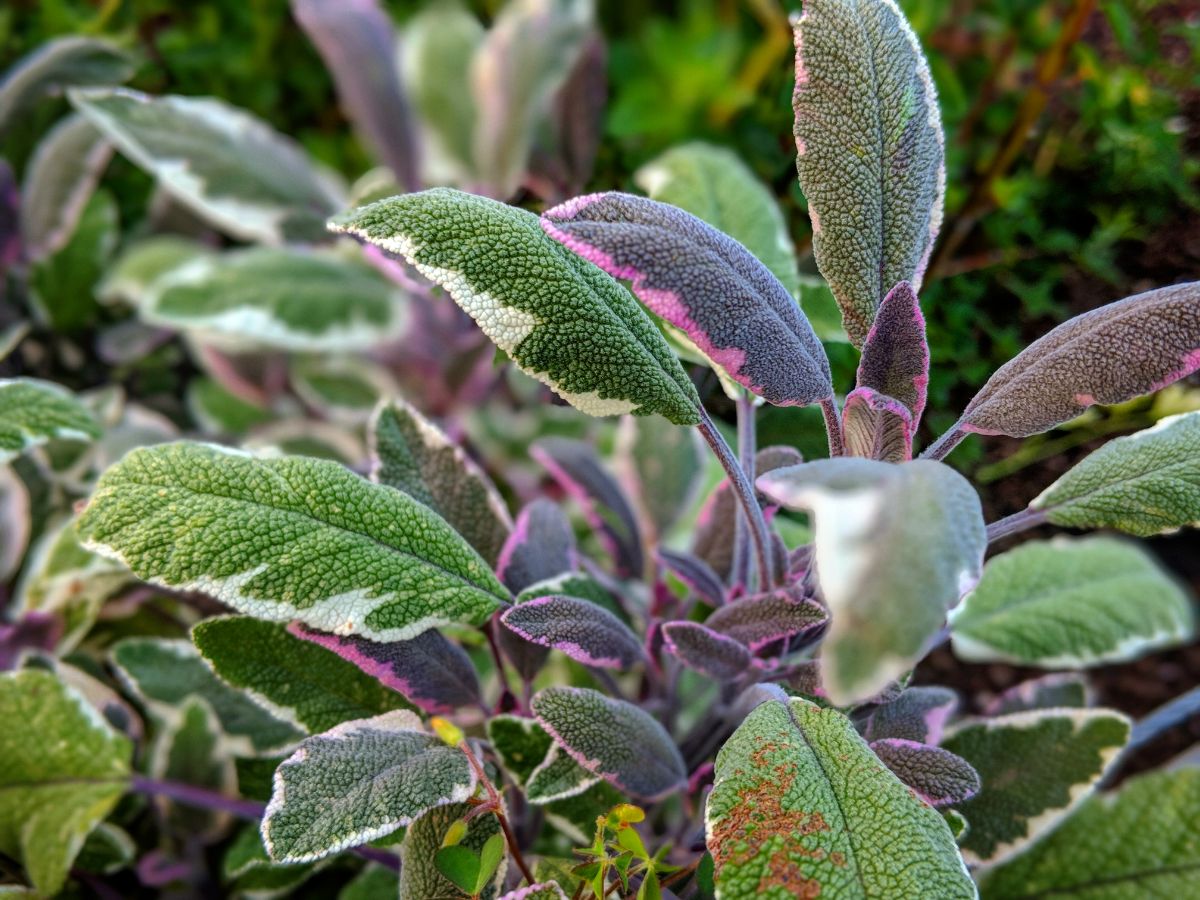
Jump to:
- 15 best edible sage varieties to grow in herb gardens
- 1. Common garden sage (Salvia officinalis)
- 2. Purple sage (Salvia officinalis 'Purpurascens')
- 3. Tricolor sage (Salvia officinalis 'Tricolor’)
- 4. Clary sage (Salvia sclarea)
- 5. Pineapple sage (Salvia elegans)
- 6. ‘Honey Melon’ pineapple sage (Salvia elegans ‘Honey Melon’)
- 7. ‘Bicolor Icterina’ sage (Salvia officinalis 'Icterina')
- 8. Dwarf green sage (Salvia officinalis 'Minimum')
- 9. Curly sage (Salvia officinalis ‘Curly’)
- 10. Berggarten sage (Salvia officinalis 'Berggarten')
- 11. Golden garden sage (Salvia officinalis ‘Aurea’)
- 12. ‘Holt’s Mammoth’ sage (Salvia officinalis ‘Holt’s Mammoth’)
- 13. Greek sage (Salvia fruticosa)
- 14. Chia (Salvia hispanica)
- 15. Grape scented sage (Salvia melissodora)
- Frequently asked questions
- Summary
15 best edible sage varieties to grow in herb gardens
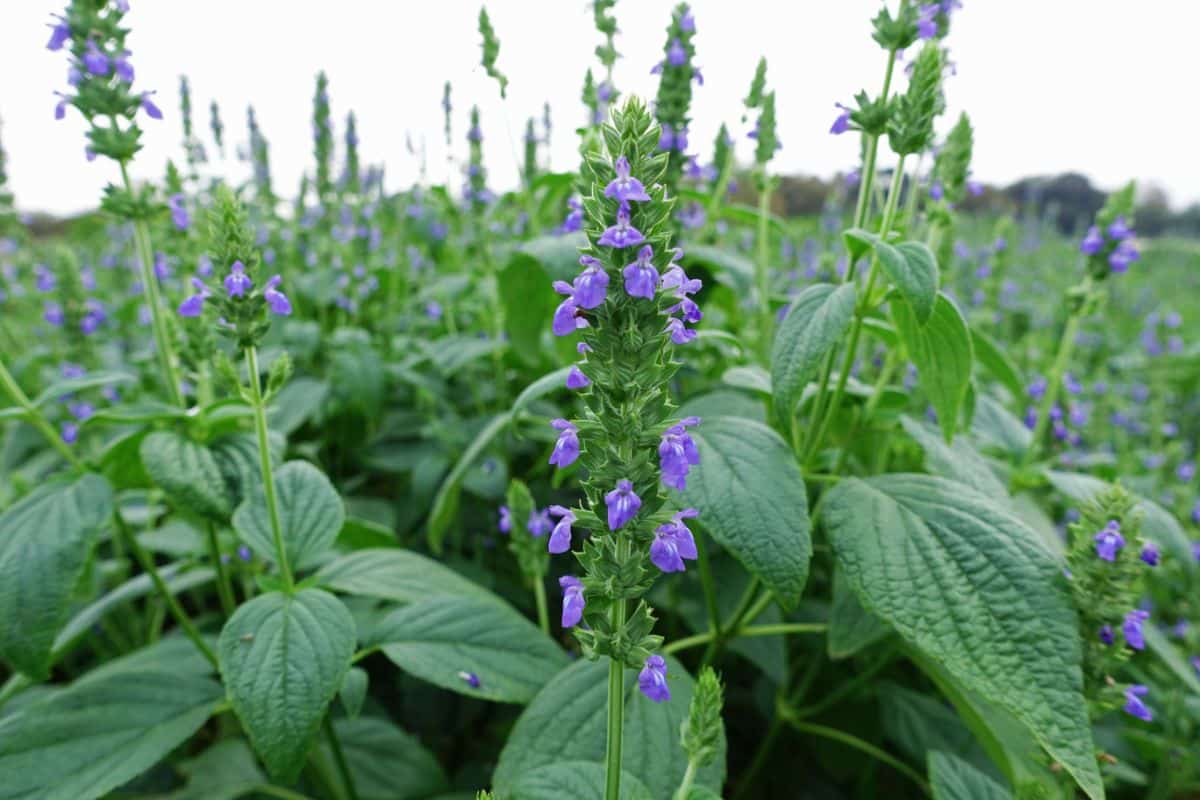
Like many other edible herbs, sage plants belong to the mint family, but they don’t grow as aggressively as standard mint plants. Most of the time, gardeners grow sage as an edible herb, but these plants have tons of ornamental appeal, and when they’re allowed to bloom, they’re some of the best pollinator plants around. While common sage is undoubtedly a pretty plant, if you want to add even more color to your foodscape, there are plenty of striking sage plants on this list that will help you do just that!
1. Common garden sage (Salvia officinalis)
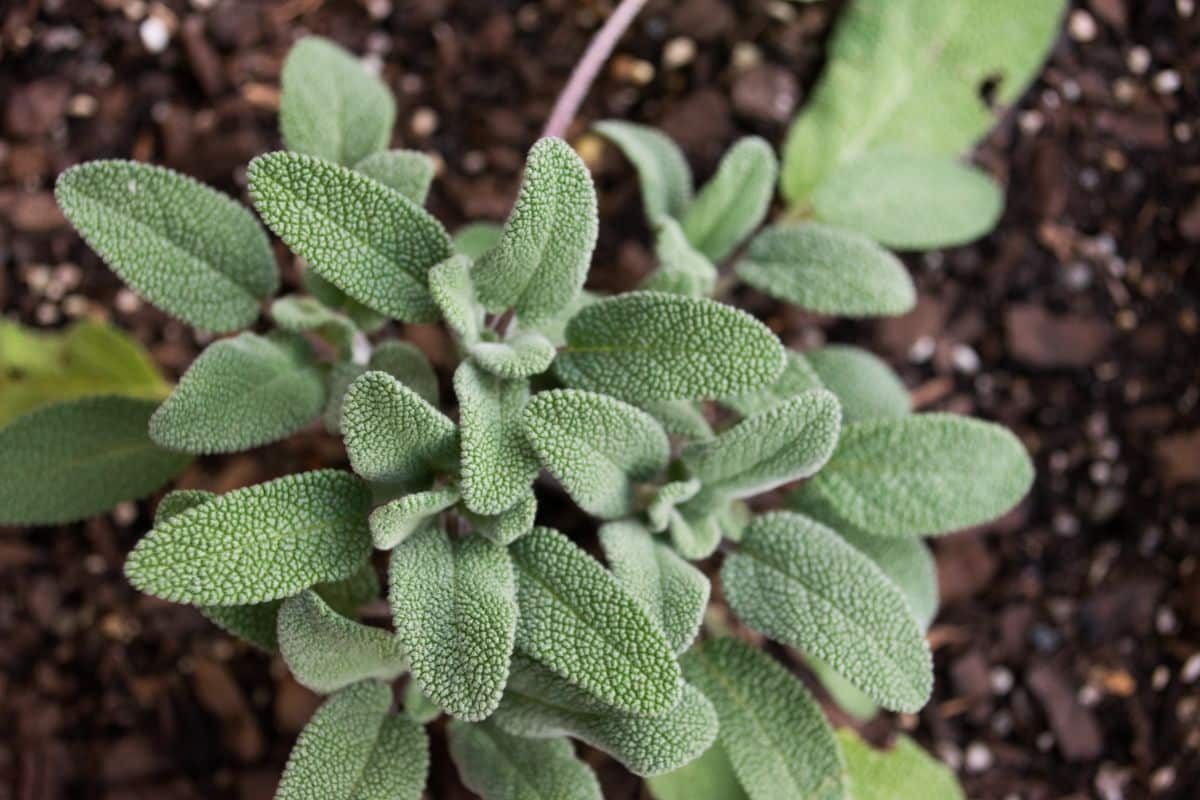
| Plant name: | Common garden sage |
| Light requirements: | Full sun to light shade |
| Water requirements: | Low |
| Growing zone: | Zones 4 to 10 |
| Notable features: | Pollinator favorite; Silvery green leaves |
The most popular type of sage to grow in home gardens and containers too, common sage is known for its fuzzy, greenish-gray leaves and easygoing nature. A top herb to use in roasted dishes, soups, and even pizzas, common sages pair beautifully with other autumnal flavors, like butternut squash. When properly cared for, common garden sage grows to about 2’ tall by 2 to 3’ wide.
While most gardeners grow common garden sage as an edible herb, this plant is also a top pollinator plant, and it can be used in companion planting as well. Common sage blooms prolifically in early summer, and its pink to purple flowers are irresistible to bees and other beneficial insects. As a companion plant, common sage grows beautifully beside brassicas, carrots, strawberries, and other plants, and its strong scent is known to repel cabbage loopers and carrot flies.
2. Purple sage (Salvia officinalis 'Purpurascens')
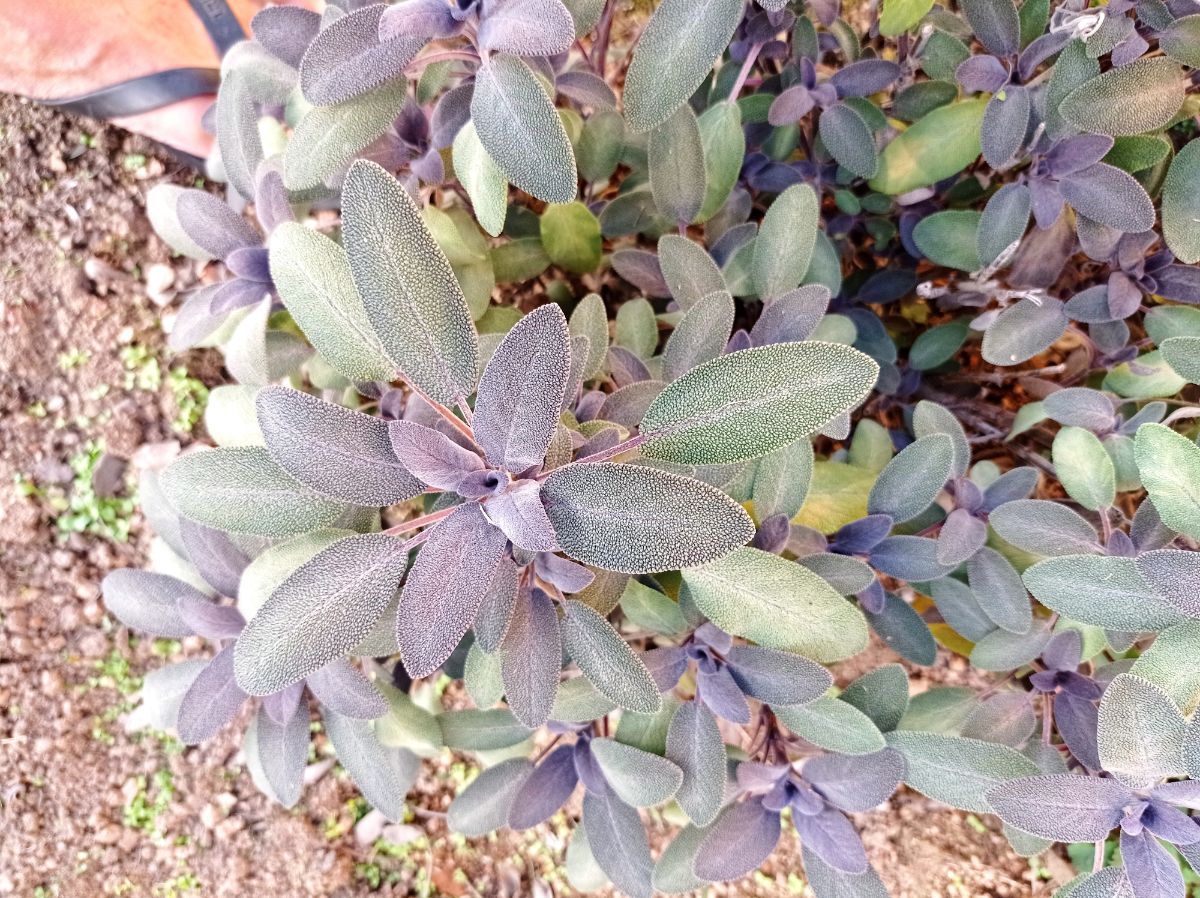
| Plant name: | Purple sage |
| Light requirements: | Full sun to light shade |
| Water requirements: | Low |
| Growing zone: | Zones 4 to 10 |
| Notable features: | Pollinator favorite; Purple leaves |
While common sage may be the easiest sage variety to find, if you love working with sage plants, you may want to look for less common variants, like purple sage. This stunning culinary herb is prized for its dramatically colored leaves, which are a dusky purple color when young and mature into a silvery green. But while purple sage looks at home in herb gardens, it has so much ornamental appeal that it can be used in flower beds and porch planters too!
Like common sage, purple sage blooms abundantly in early summer, and its purple flowers lure in bees, butterflies, and, occasionally, hummingbirds. Like other Salvia officinalis species, purple sage stems are tender when young, but they become woody as they age. But you can keep sage plants from becoming woody and sparse by pruning them annually in spring.
3. Tricolor sage (Salvia officinalis 'Tricolor’)
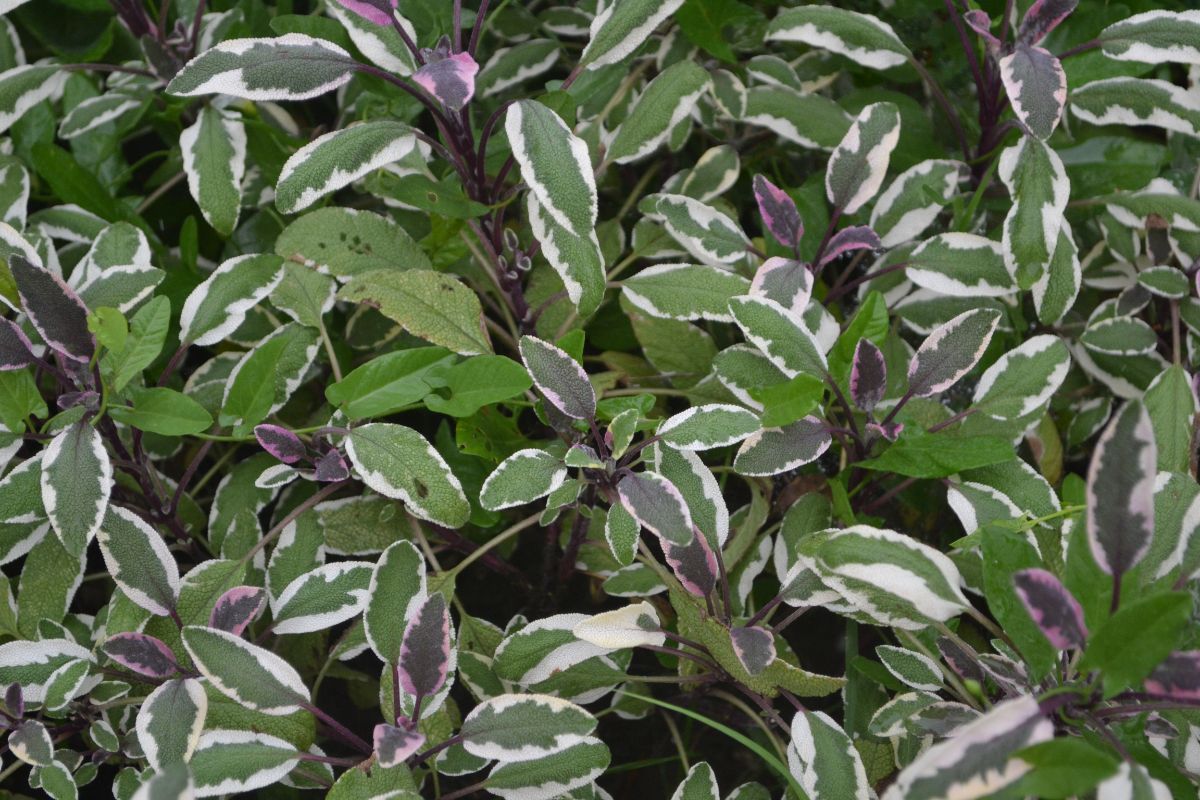
| Plant name: | Tricolor sage |
| Light requirements: | Full sun to light shade |
| Water requirements: | Low |
| Growing zone: | Zones 4 to 10 |
| Notable features: | Pollinator favorite; Multi-colored leaves |
Tricolor sage is another colorful variant of common sage plant, but unlike purple sage, this sage cultivar has three distinct colors on its mesmerizing leaves! Tricolor sage’s leaves are a bright green color at their center, but they are ringed in a creamy-toned and ornamented with streaks of purple and pink. A true showstopper in herb gardens, tricolor sage also blooms bluish purple flowers in spring, and it’s also a pollinator favorite.
Because tricolor sage is so flashy, it can be used as an ornamental or grown in window boxes and patio planters as well. Hardy and resilient, grows perennially in zones 4 through 10, although plants generally become less productive after 3 to 5 years. If you notice that your sage plants seem to be winding down, you may want to replace your plants or propagate new sage plants from cuttings taken from your old sage plants.
4. Clary sage (Salvia sclarea)
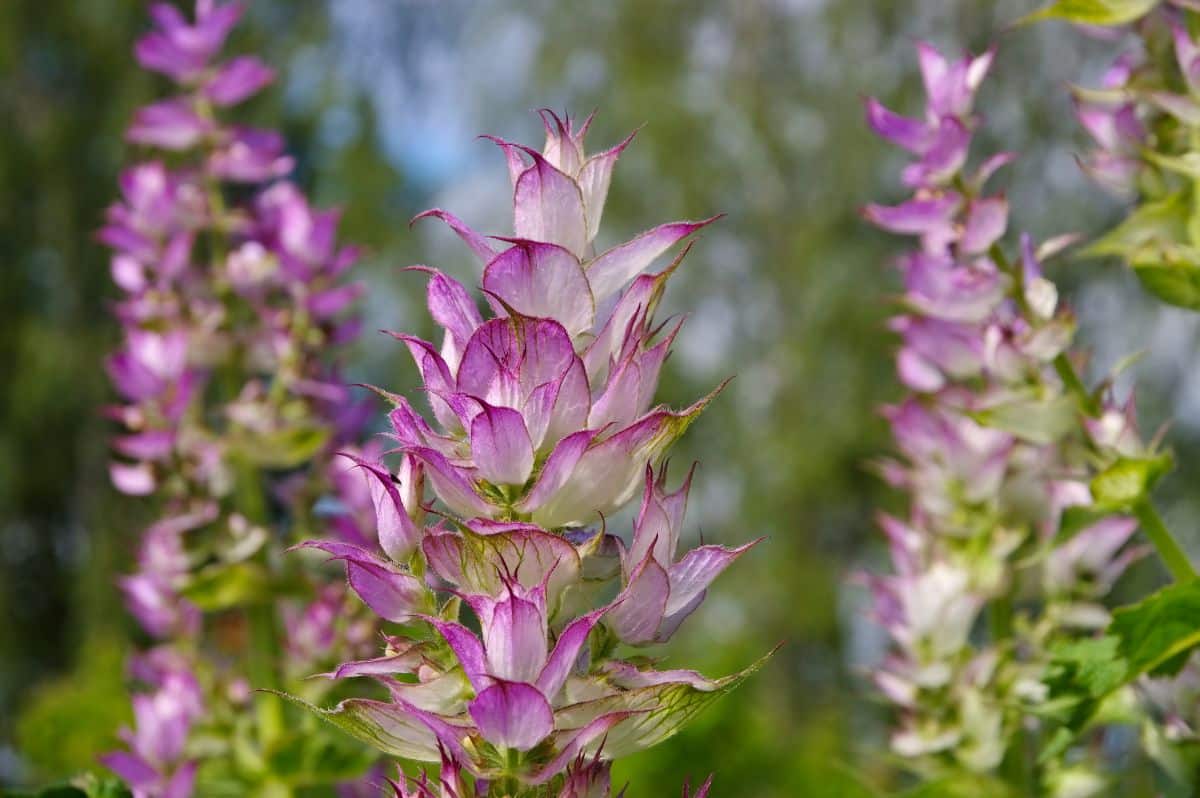
| Plant name: | Clary sage |
| Light requirements: | Full sun |
| Water requirements: | Moderate to low |
| Growing zone: | Zones 5 to 9 |
| Notable features: | Highly fragrant with notes of amber; Flowers ideal for pressing |
Also known as eye bright or cleareye, clary sage is mostly known as a medicinal herb, and it has traditionally been used for aromatherapy and essential oil making. However, clary sage is also an edible plant, and its leaves and flowers can be brewed into herbal teas or wines or infused into homemade jellies and candies. And, of course, clary sage also makes a spectacular ornamental plant, and its feathery, pinkish-purple flowers look right at home in cottage garden designs.
Like common sage, clary sage hails from the Mediterranean region, and it grows best in full sun and well-drained earth. Even under the best conditions, clary sage plants are short-lived, and they often die back after 2 years, although you may be able to keep them going for a few more years if you’re lucky. Hardy to USDA growing zone 5, clary sage flowers from late spring to early summer, and its blooms press beautifully if you want to enjoy them even longer!
5. Pineapple sage (Salvia elegans)
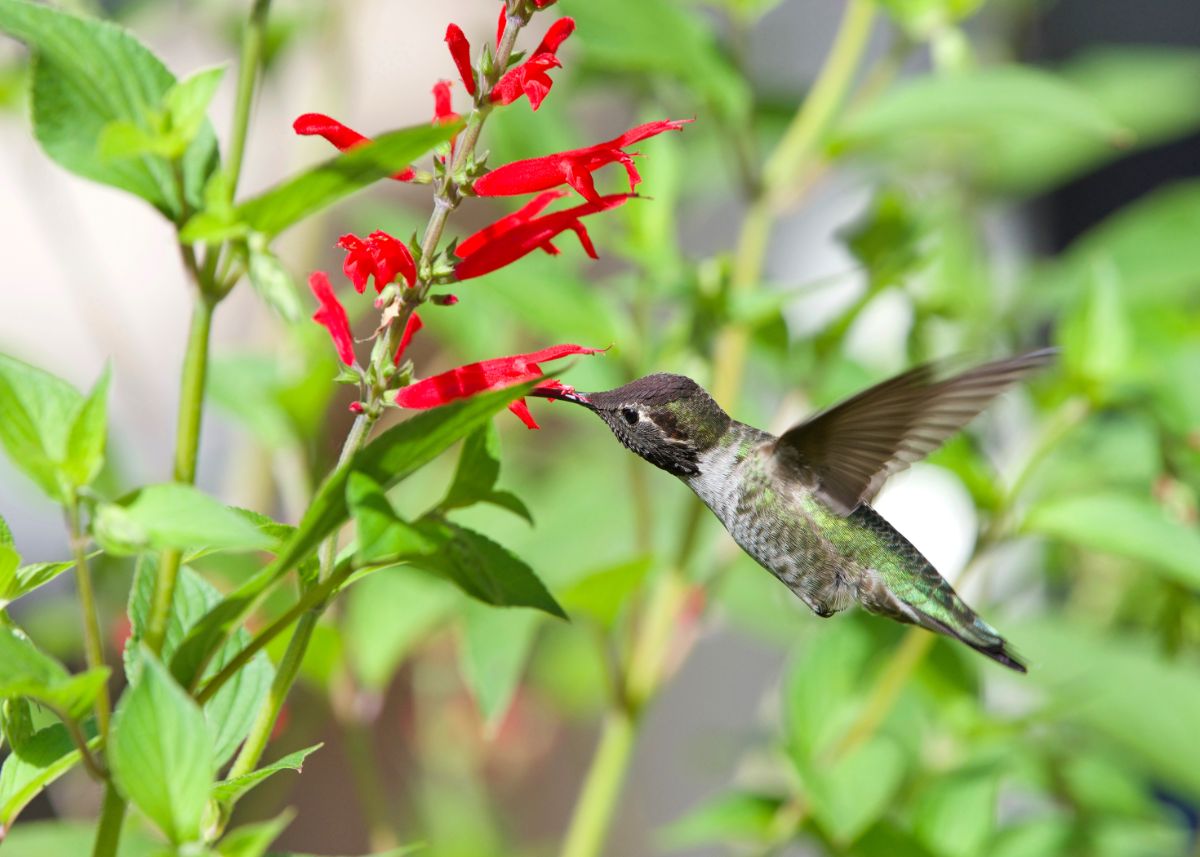
| Plant name: | Pineapple sage |
| Light requirements: | Full sun to light shade |
| Water requirements: | Moderate to low |
| Growing zone: | Zones 8 to 11 |
| Notable features: | Highly attractive to hummingbirds; Vivid colors |
Like other true sage plants, pineapple sage belongs to the Salvia family, which includes many ornamental species. But while pineapple sage can be grown for aesthetics alone, this plant is also a delicious and fragrant addition to herb gardens. When crushed, pineapple sage leaves emit a strong, pineapple-like fragrance, and the leaves taste minty with hints of a fruity flavor.
While pineapple sage can be brewed into teas or used as a garnish, this plant is mostly known for its vivid, chartreuse green leaves and contrasting crimson flowers. Tubular in form, pineapple sage flowers are highly attractive to hummingbirds, but they can lure beneficial insects to your garden as well. Just keep in mind that pineapple sage isn’t as hardy as some of the other sages on this list, and it only grows perennially in zones 8 through 11, although plants can be overwintered indoors in pots in colder climates.
6. ‘Honey Melon’ pineapple sage (Salvia elegans ‘Honey Melon’)
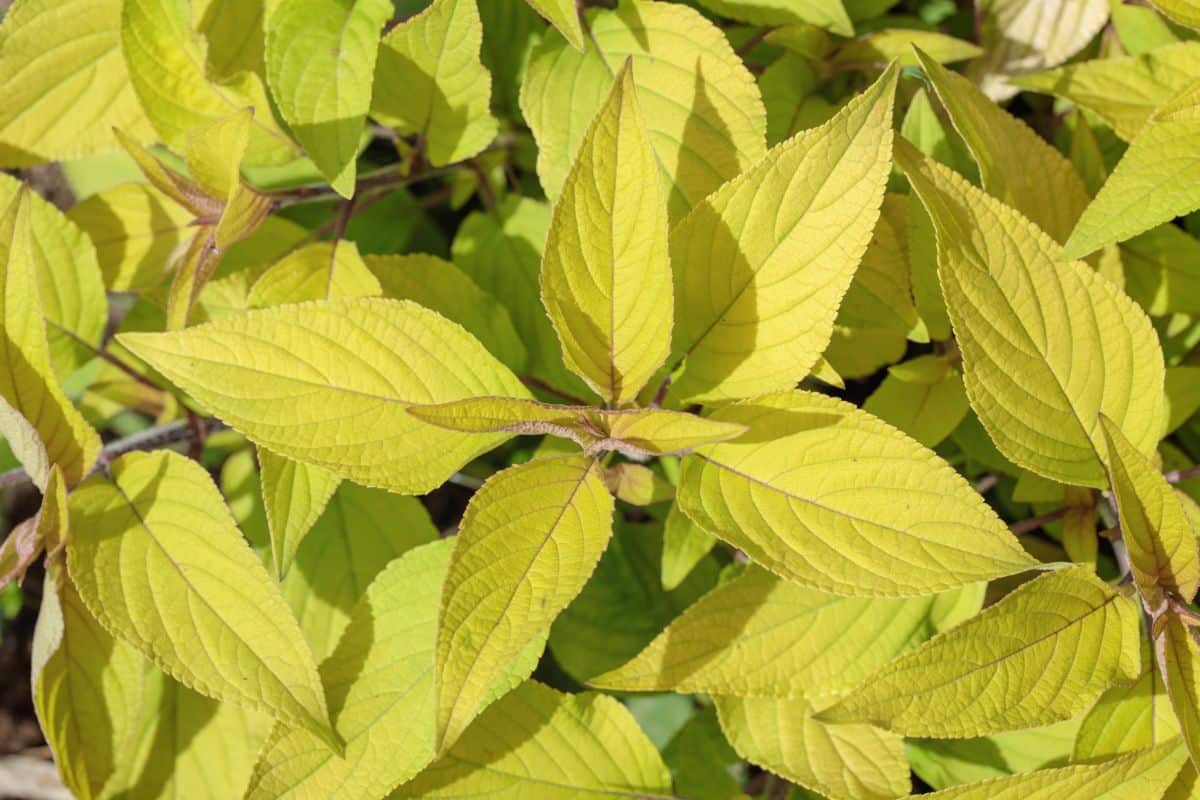
| Plant name: | ‘Honey Melon’ pineapple sage |
| Light requirements: | Full sun to light shade |
| Water requirements: | Moderate to low |
| Growing zone: | Zones 9 to 11 |
| Notable features: | Vivid colors; Long-lasting flowers |
‘Honey Melon’ is a variety of pineapple sage, and, as its name suggests, its edible leaves have a succulently sweet and melon-like flavor. Unbeatable in hot and cold teas, ‘Honey Melon’ pineapple sage can also be steeped into cocktails or used in fruit salads, sorbets, and other desserts too. Not to mention, this plant is just as lovely as standard pineapple sage, and its crimson flowers are favorite snack spots for hummingbirds.
Compared to other Salvia elegans plants, ‘Honey Melon’ tends to bloom a bit earlier in the season, and its long-lasting colors stay fresh for a bit longer too. Full-grown plants grow to about 2’ in height, and they make showy additions to mixed beds and garden bed borders. This sage variety is only hardy in growing zones 9 through 11, though, so it will need to be overwintered indoors in pots if you live in a chilly climate.
7. ‘Bicolor Icterina’ sage (Salvia officinalis 'Icterina')
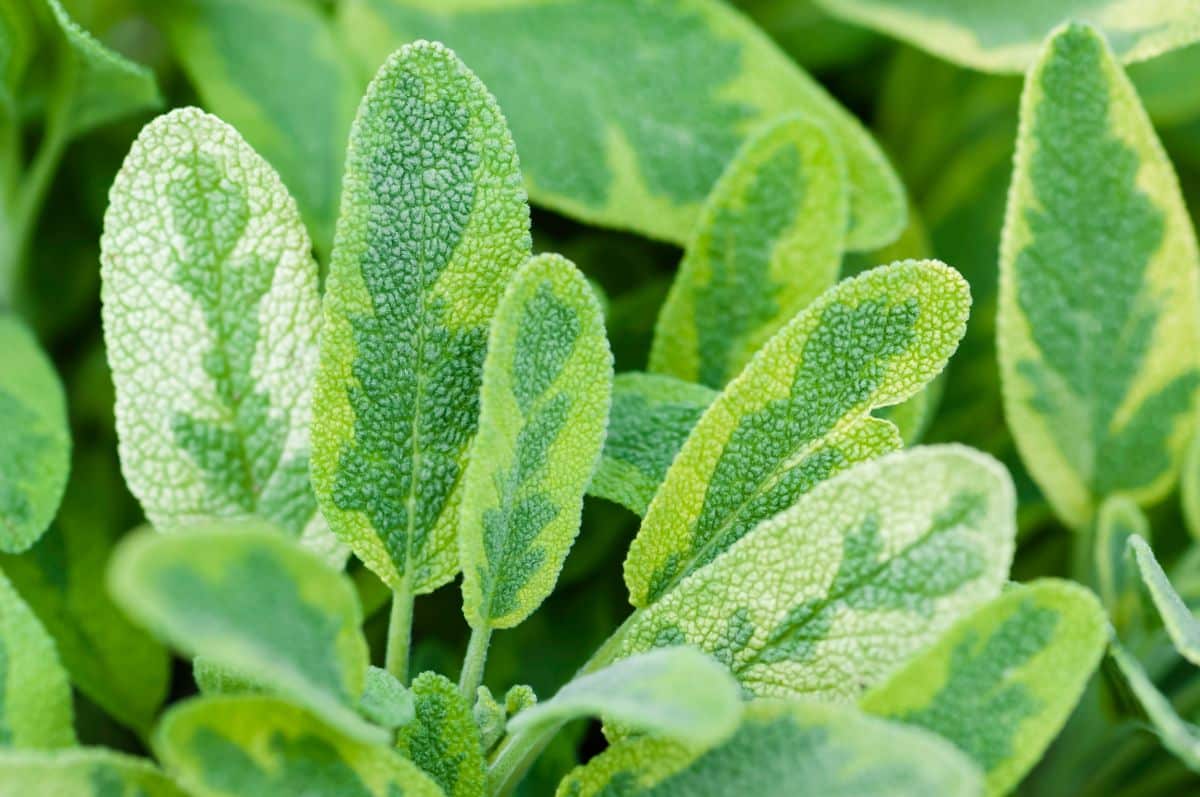
| Plant name: | ‘Bicolor Icterina’ sage |
| Light requirements: | Full sun to light shade |
| Water requirements: | Moderate to low |
| Growing zone: | Zones 6 to 10 |
| Notable features: | Pollinator favorite; Multi-colored leaves |
Another variant of common sage, ‘Bicolor Icterina’, sage plants have bright green leaves that are ornamented in lighter shades of green and a creamy white color. A top-notch choice for ornamental gardens and edible herb beds, ‘Bicolor Icterina’ is undoubtedly a pretty plant, but it’s also tasty. Like other common sage cultivars, ‘Bicolor Icterina’ can be used fresh, but it’s even tastiest in stewed or roasted dishes.
In early summer, ‘Bicolor Icterina’ sage plants throw up tall spikes of purple flowers, which only serve the highlight the plant’s flashy leaves. A bold choice for flower gardens, ‘Bicolor Icterina’ only grows to about 1 to 2’ in height, so it can also be grown in a small space or container garden if needed. Since this sage variant can be harder to find than some of the other plants on this list, you may have trouble tracking it down at local plant nurseries, although you can usually find ‘Bicolor Icterina’ sage online.
8. Dwarf green sage (Salvia officinalis 'Minimum')
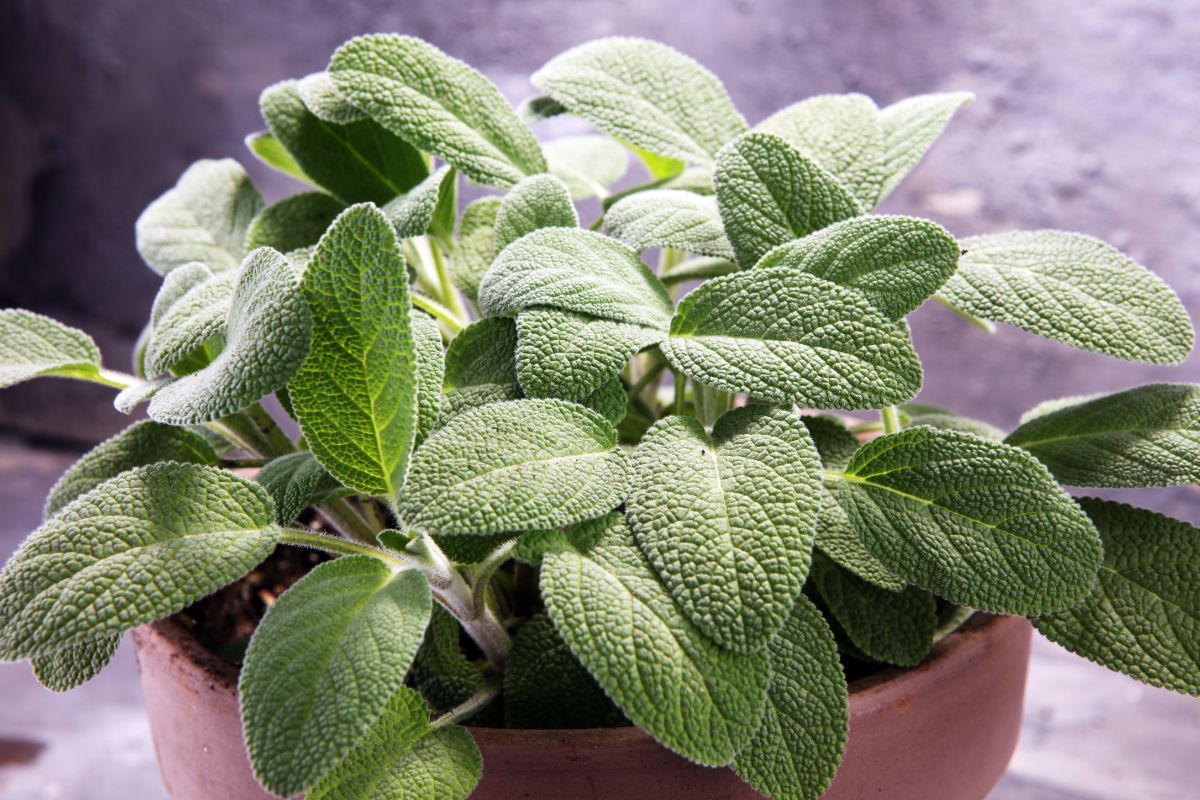
| Plant name: | Dwarf green sage |
| Light requirements: | Full sun to light shade |
| Water requirements: | Low |
| Growing zone: | Zones 5 to 11 |
| Notable features: | Perfect size for containers and small spaces |
Sage plants can get quite tall in garden beds, which is usually a good thing. But if you are interested in growing sage indoors or in a small space garden, you may not have the room to keep full-sized sage plants. And that’s where dwarf green sage comes in!
Another variant of common sage, dwarf green sage, is a pint-sized beauty that only grows to about 12” tall. An ideal size for porch planters, dwarf green sage can also be grown indoors in a windowsill herb garden. Just make sure that you provide indoor sage plants with plenty of bright light and water them sparingly since indoor sage will need even less water than outdoor plants.
9. Curly sage (Salvia officinalis ‘Curly’)

| Plant name: | Curly sage |
| Light requirements: | Full sun to light shade |
| Water requirements: | Low |
| Growing zone: | Zones 5 to 10 |
| Notable features: | Textured leaves |
Common sage plants have plenty of texture as it is, thanks to their fuzzy leaves. But if you love whimsical plants, you may want to try out curly sage, which is another Salvia officinalis cultivar. However, if you’re looking for curly sage, be sure to check the plant’s Latin name, as Teucrium scorodonia is also called “curly sage,” but it’s a totally different plant!
Like common sage, curly sage has silvery green leaves, which give a light and airy feel. But this plant has wavy leave margins, which adds even more interest to the plant’s edible foliage. Curly sage is a relatively new edible sage cultivar, and it can be tricky to find, although plants and seeds can be ordered online.
10. Berggarten sage (Salvia officinalis 'Berggarten')
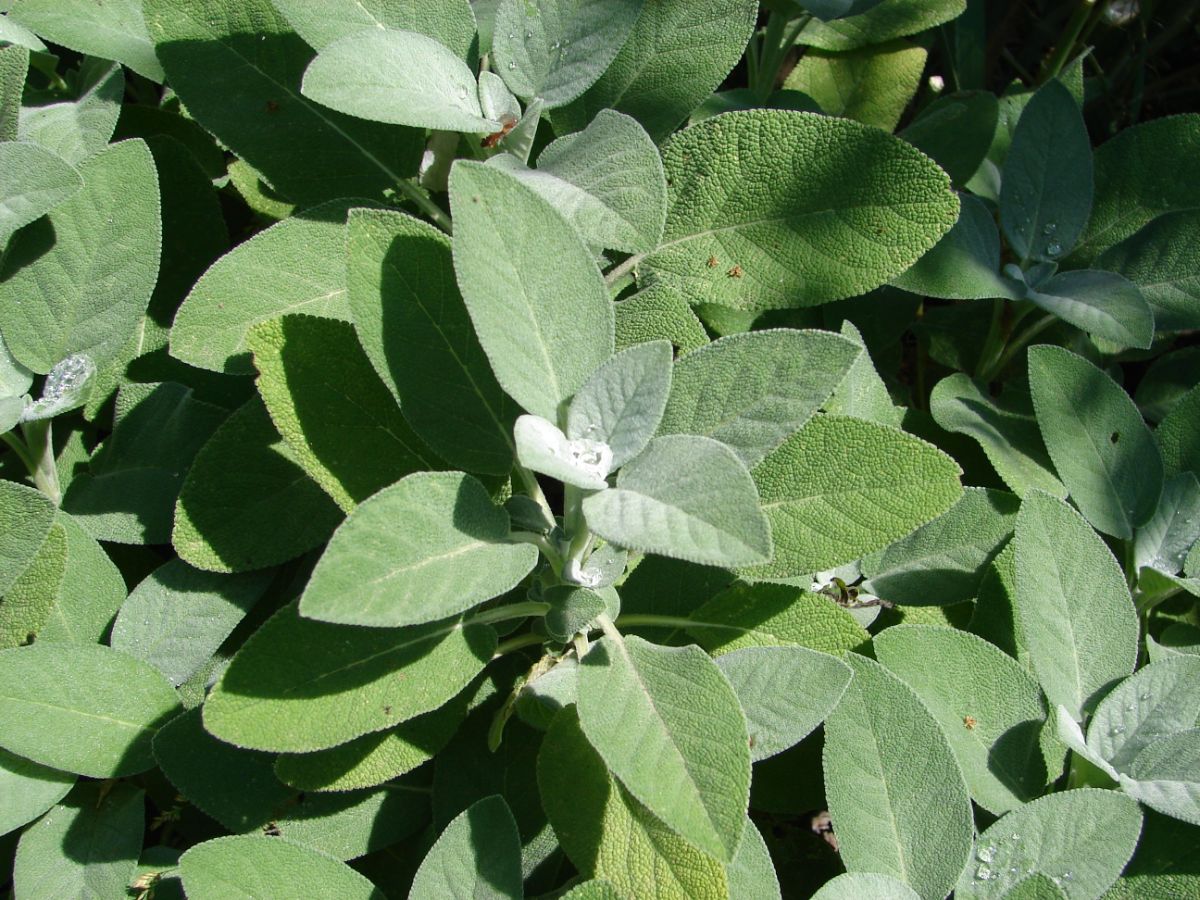
| Plant name: | Berggarten sage |
| Light requirements: | Full sun |
| Water requirements: | Moderate to low |
| Growing zone: | Zones 5 to 11 |
| Notable features: | Broader leaves than common sage |
Named for an estate in Germany, Berggarten sage’s name translates into “mountain garden,” and the plant is yet another variant of common garden sage. Like common sage, Berggarten sage has silvery-green leaves, which take on a more silvery cast as the plant ages; however, Berggarten’s leaves are more broad than the leaves of common garden sage. What’s more, those brilliant leaves make a fine backdrop to the plant’s lavender-hued flowers, which bloom throughout summer.
Salvia officinalis plants, including Berggarten sage, should be cut back from time to time to improve their growth and encourage the plant to produce more leaves and branches. But don’t cut sage plants back too late in the fall, as this can expose the plants to winter damage. After pruning sage plants, save your cuttings for cooking or propagate them into new sage plants with either soil or water propagation methods.
11. Golden garden sage (Salvia officinalis ‘Aurea’)

| Plant name: | Golden garden sage |
| Light requirements: | Full sun to light shade |
| Water requirements: | Low |
| Growing zone: | Zones 7 to 9 |
| Notable features: | Pollinator favorite; Multi-colored leaves |
If you needed even more sage color options, golden garden sage can be a fun plant to try! Much like ‘Bicolor Icterina’ sage, golden garden sage has bicolored leaves, although this plant’s leaves have a more golden-yellow cast. Stately on its own, golden garden sage looks even more impressive when planted in a grouping of other sages, and you may even want to grow golden garden sage with other showy sage varieties like ‘Tricolor,’ ‘Purple’ and ‘Bicolor Icterina.’
While golden garden sage may look a bit different than common sage, it has the same intense fragrance and taste, and it can be used in any recipe where you’d otherwise use common sage. If you happen to harvest more sage leaves than you can use at once, you can also freeze sage or dry sage leaves for later use. To dry fresh sage, gather sage branches in small bundles and hang them up to dry in a cool, dry place out of direct sunlight until the leaves are so dry they can be easily crumbled between your fingers.
12. ‘Holt’s Mammoth’ sage (Salvia officinalis ‘Holt’s Mammoth’)
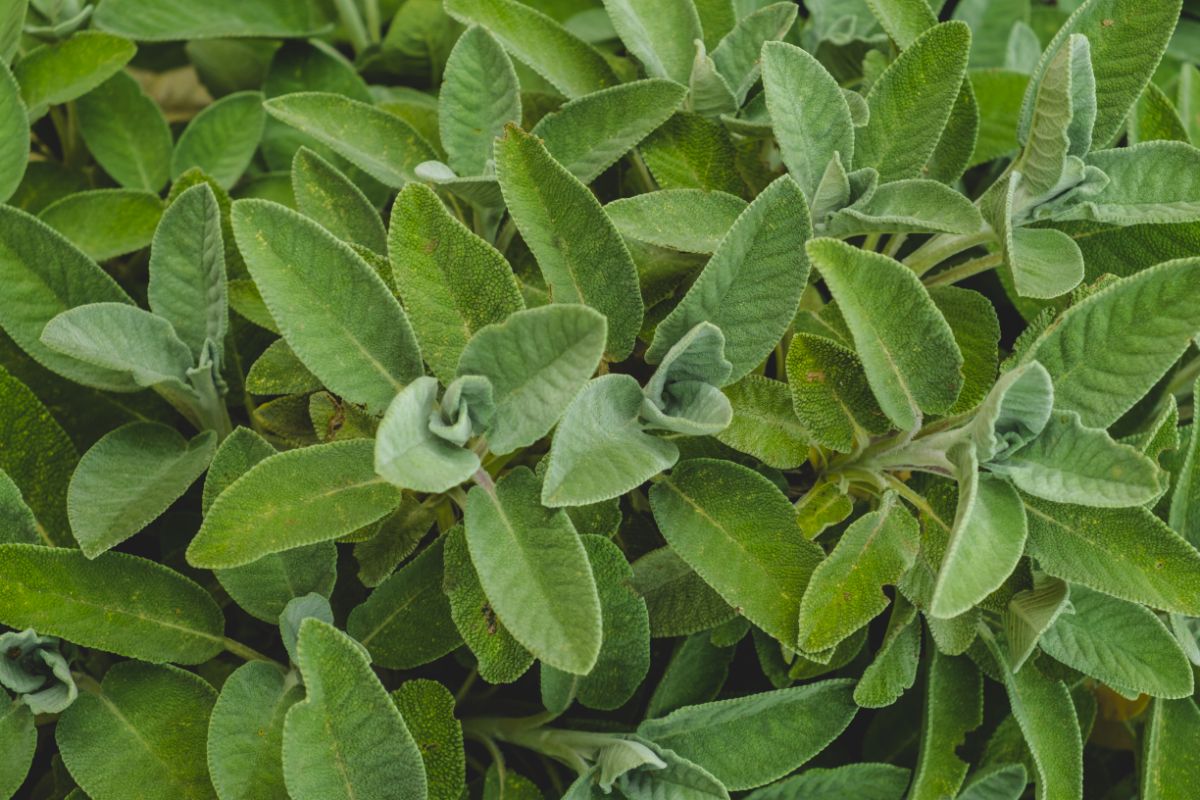
| Plant name: | ‘Holt’s Mammoth’ sage |
| Light requirements: | Full sun to light shade |
| Water requirements: | Moderate to low |
| Growing zone: | Zones 5 to 9 |
| Notable features: | Broader leaves than common sage |
‘Holt’s Mammoth’ sage has many of the same characteristics of common sage, but this cultivar has broader leaves. Growing from about 2 to 3’ in height, ‘Holt’s Mammoth’ sage makes a fabulous backdrop plant in herb gardens, but it can also be kept shorter with regular pruning. Like other sages, ‘Holt’s Mammoth’ sage produces tall spires of flowers in summer, which are usually purple in tone, but you may be able to find plants with pink or white blooms too.
Because ‘Holt’s Mammoth’ sage has larger leaves, it may take a bit longer to hang dry than some other sage types, but it’s worth it! Dried sage leaves can be stored in airtight bottles on your pantry shelves for a year or more, but don’t grind your sage leaves before storing them. Whole leaves will retain their volatile oils better than ground leaves, so only grind or crush dried herbs immediately before you intend to use them.
13. Greek sage (Salvia fruticosa)
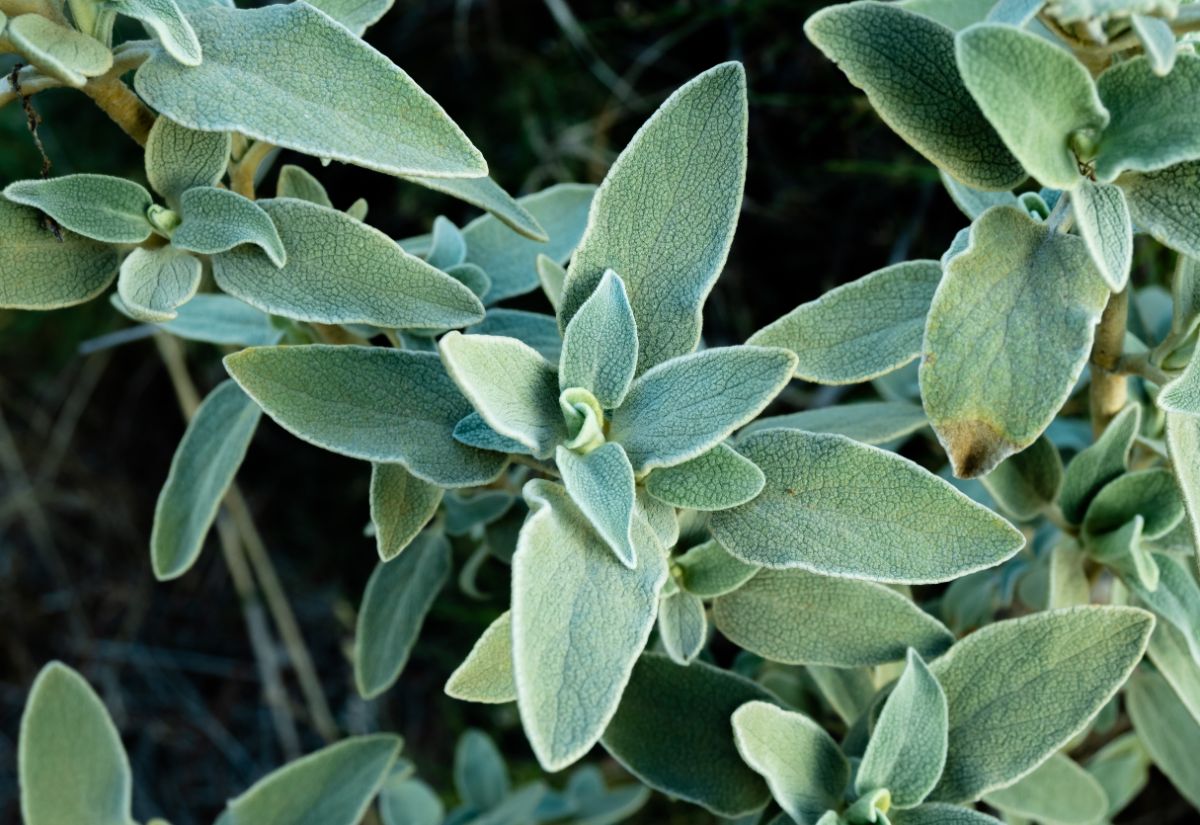
| Plant name: | Greek sage |
| Light requirements: | Full sun |
| Water requirements: | Low |
| Growing zone: | Zones 9 and up, may survive in Zone 8 with extra winter protection |
| Notable features: | Stronger flavor than common sage |
Native to Greece, Greek sage is a lesser-known sage variety, although it is often sold at grocery stores as dried sage. This fragrant and tasty plant can be used like common sage, but it has a more intense flavor, so you may want to dial back your seasoning and only use about half as much Greek sage compared to common sage. But if you want your holiday stuffing to really pack a punch, Greek sage can bring the flavor up a notch!
Compared to some other sage varieties, Greek sage is not as cold hardy and is only overwinters in growing zones 9 and up, although plants can sometimes be overwintered in zone 8 with extra protection. Like many other sages, Greek sage has fuzzy leaves, which the plant uses to lock in moisture during dry, hot summers. Evergreen and heat resistant, Greek sage is a fast-growing plant, and it often grows up to 4’ tall.
14. Chia (Salvia hispanica)
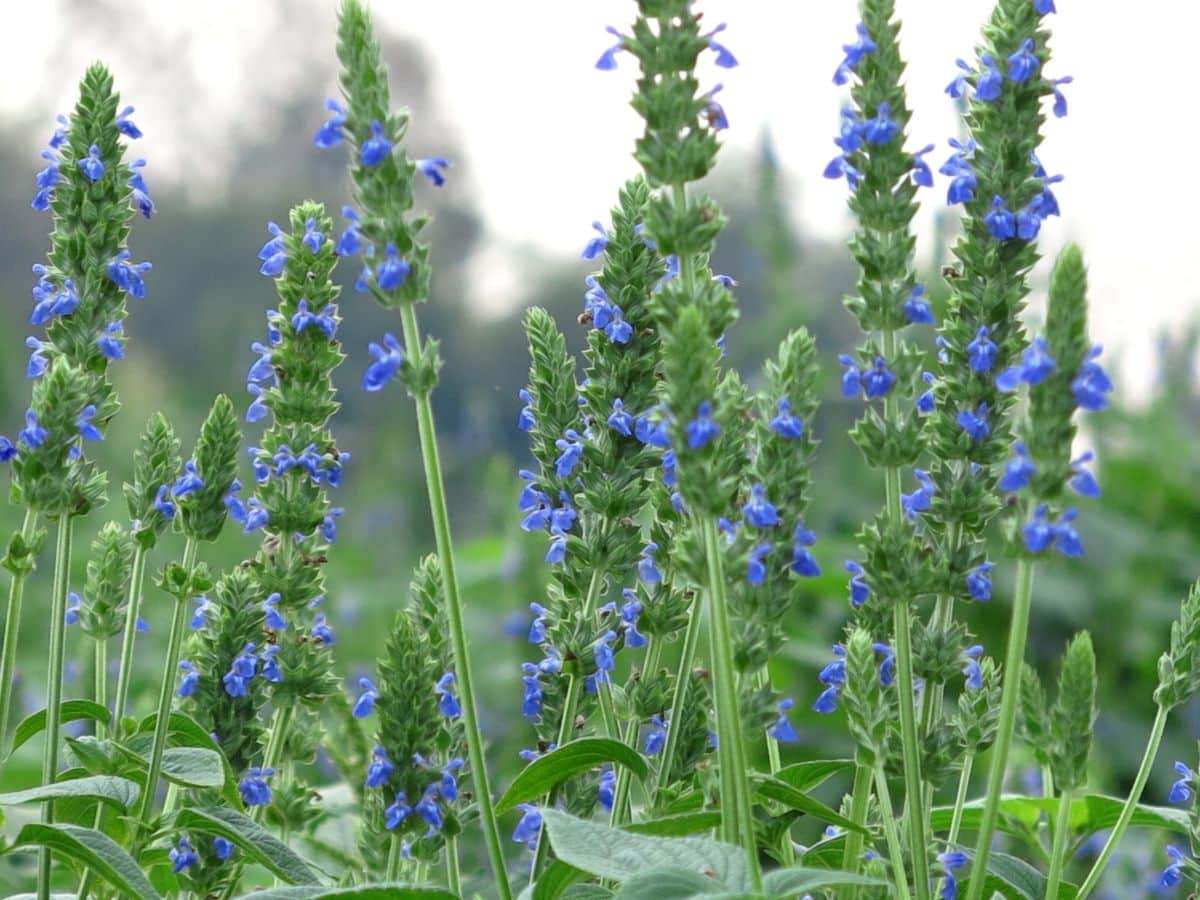
| Plant name: | Chia |
| Light requirements: | Full sun |
| Water requirements: | Moderate to low |
| Growing zone: | Zones 8 to 11 |
| Notable features: | Edible, protein-packed seeds |
Many of the most common varieties of edible sage belong to the Salvia officinalis species, but chia brings something different to the table! Chia is not the most obvious sage-type plant, but chia does belong to the sage family, and it makes a tasty and nutritious addition to garden beds. Chia plants are most famous for their seeds, which are used in chia pets, but chia seeds can also be added to smoothies, blended into puddings, and added to other recipes too!
Rich in plant proteins and omega-3 fatty acids, chia seeds have been cultivated for thousands of years, and they were staple foods of the Aztecs and Mayans. Today, chia seeds are commonly sold at health food stores, but they can easily be grown in your garden too. Beyond their seeds, chia leaves are also edible, but they have a relatively mild and earthy flavor that does not closely resemble the taste of common sage.
15. Grape scented sage (Salvia melissodora)

| Plant name: | Grape scented sage |
| Light requirements: | Full sun to light shade |
| Water requirements: | Moderate to low |
| Growing zone: | Zones 8 to 11 |
| Notable features: | Unique, grape-like aroma |
There are over 1000 different species of Salvia plants, and they range in form from small herbs to large shrubs. Grape-scented sage is one of the larger species of salvia you can find for home gardens, and this plant easily grows up to 8’ tall! An excellent backdrop plant for ornamental gardens, grape-scented sage is aptly as the plant’s lavender flowers exude a mouthwatering grape-like aroma when they’re in bloom.
A late bloomer, grape-scented sage flowers well into fall, providing much-needed nectar for late-season pollinators. However, this sage plant is not particularly cold hardy, and it only grows perennially in USDA growing zones 8 through 11. An excellent choice for xeriscapes, grape-scented sage doesn’t need much water, and it grows well with other low-water plants, like other salvias, yarrow, echinacea, and lemon thyme.
Frequently asked questions

Common garden sage (Salvia officinalis) is the most popular type of sage to use in cooking, but other Salvia officinalis cultivars can also be used in recipes. If you’re tired of working with green sage, try out colorful varieties like bicolor, tricolor, and purple garden sage!
Sage plants belong to the Salvia family, but not all salvias are edible. Most ornamental salvias should only be used for aesthetic or pollinator gardening purposes, and they aren’t intended to be consumed.
Sage plants will grow best in full sun, but most sage varieties can tolerate some light shade if needed. In very hot areas, keeping sage in a spot that receives some partial afternoon shade may help the plant grow even better!
Beyond being simply delicious, sage plants have tons of ornamental appeal, and their dainty flowers are rich in the nectar and pollen that pollinators need. What’s more, sage’s strong scent makes this herb a fantastic companion plant for natural pest control purposes. If your plants are struggling with pests, try growing sage near your carrots, brassicas, or strawberries.
Sage is a pretty adaptable plant overall, but it doesn’t need much water. Keeping sage plants in an area of your garden that stays consistently moist is a recipe for disaster, as overly saturated sage plants will usually develop root rot and die away.
Yes! Sage plants can grow beautifully in a container garden as long as they’re kept in a container with plenty of room for their roots. For best results, grow individual sage plants in pots or grow bags that are at least 10” in diameter.
Summary
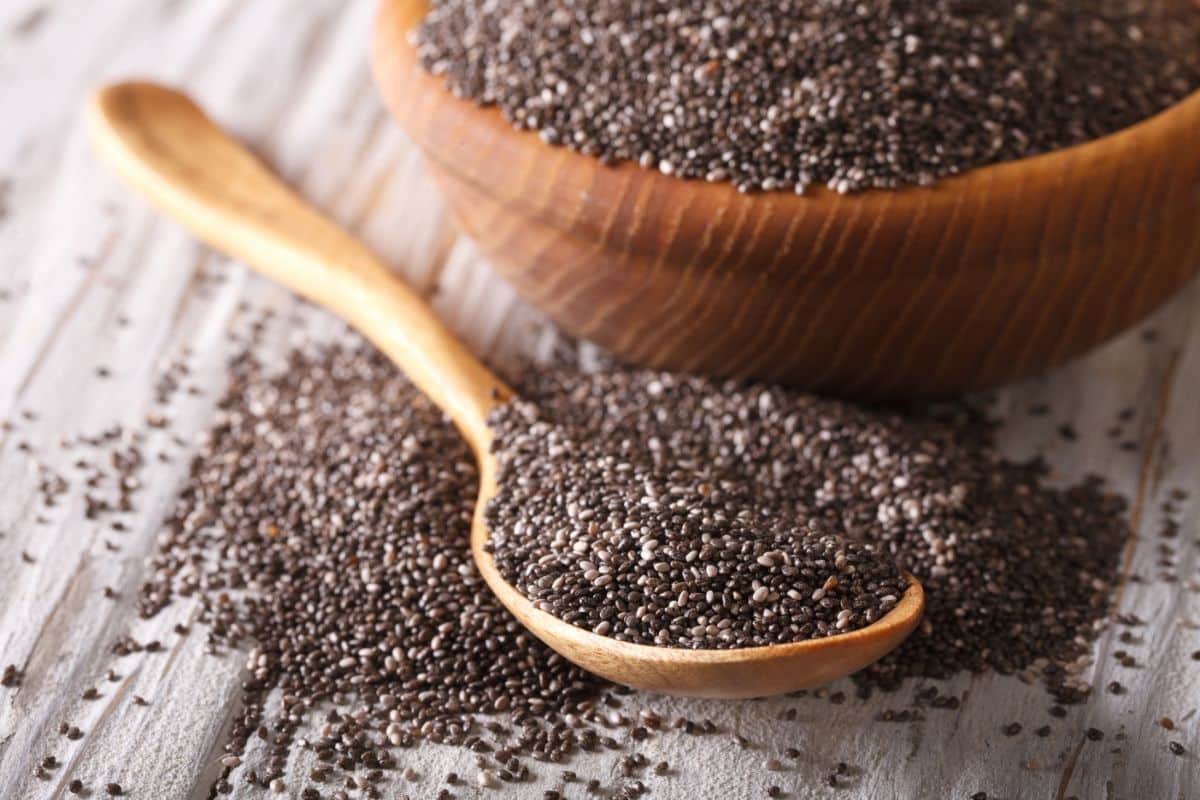
While common garden sage is undoubtedly a pretty and tasty herb, if you love working with herbs as ornamentals, there are many other colorful sage plants to try. The beauty of growing sage is that these plants are relatively simple to keep, and they have very similar growing requirements. So if you’re already keeping green sage, you can easily add more colorful sage plants to your herb beds to pack even more sumptuous color into your garden!
If you liked this article and would like to learn more about different herb varieties, check out our guide on the easy-to-grow lavender types you may never have heard of!

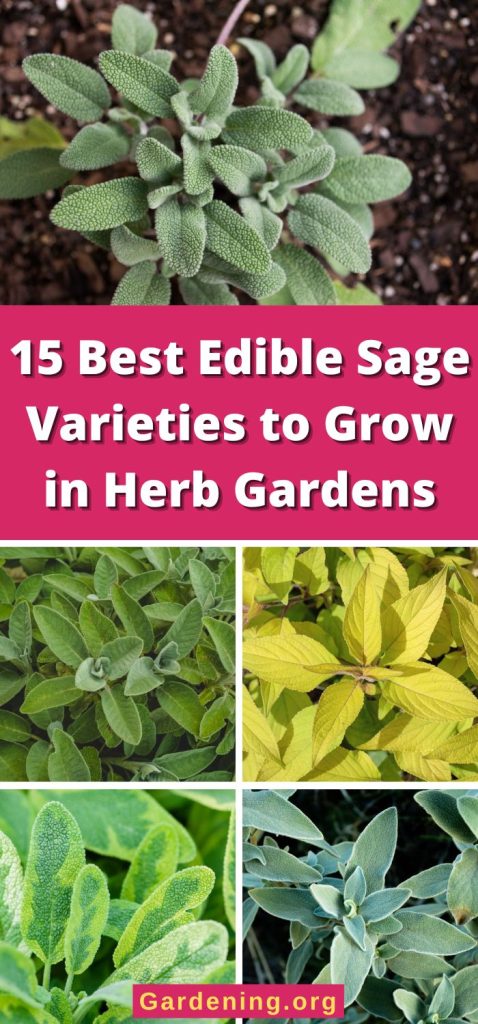

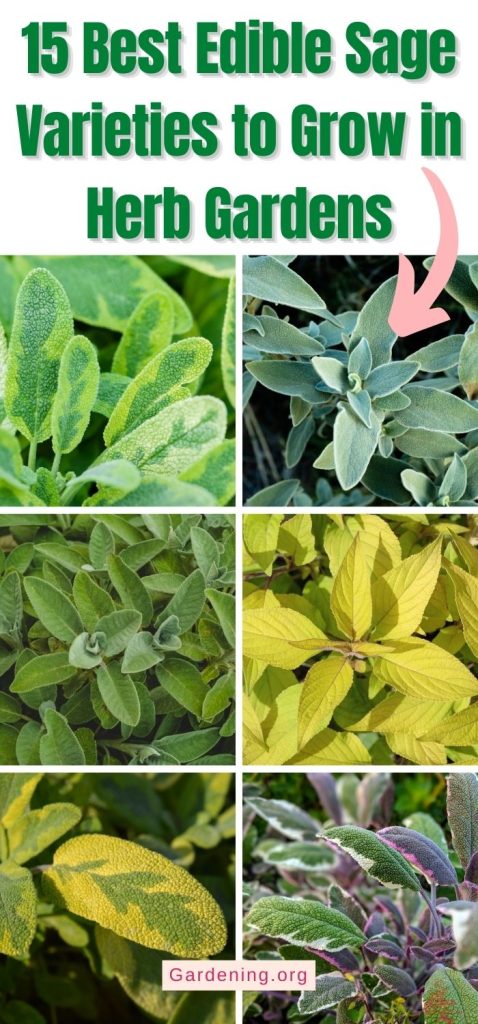


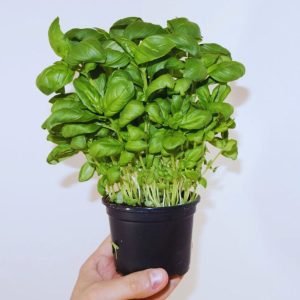
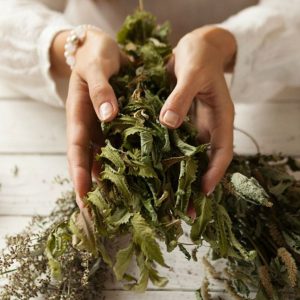
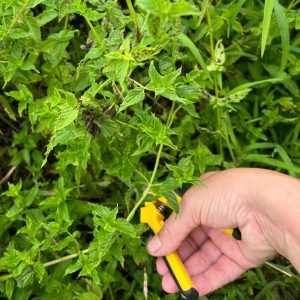
Leave a Reply